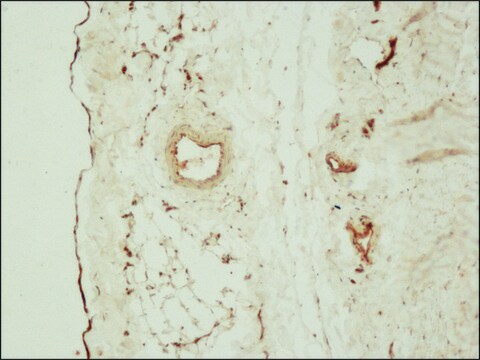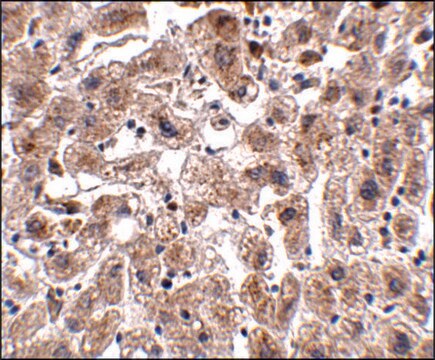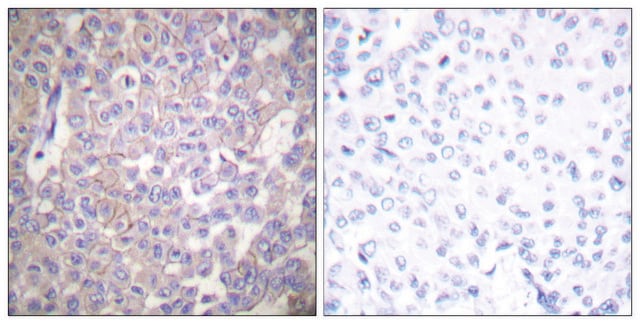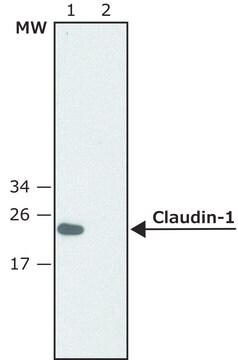ABT45
Anti-Claudin-5 Antibody
from rabbit, purified by affinity chromatography
Synonym(e):
Claudin-5, Transmembrane protein deleted in VCFS, TMDVCF
About This Item
Empfohlene Produkte
Biologische Quelle
rabbit
Qualitätsniveau
Antikörperform
affinity isolated antibody
Antikörper-Produkttyp
primary antibodies
Klon
polyclonal
Aufgereinigt durch
affinity chromatography
Speziesreaktivität
rat, mouse, horse, human
Speziesreaktivität (Voraussage durch Homologie)
equine (based on 100% sequence homology), ox (based on 100% sequence homology)
Verpackung
antibody small pack of 25 μg
Methode(n)
immunohistochemistry: suitable (paraffin)
western blot: suitable
NCBI-Hinterlegungsnummer
UniProt-Hinterlegungsnummer
Versandbedingung
ambient
Lagertemp.
2-8°C
Posttranslationale Modifikation Target
unmodified
Angaben zum Gen
human ... CLDN5(7122)
Allgemeine Beschreibung
Spezifität
Immunogen
Anwendung
Zellstruktur
Adhäsions-Proteine (CAMs – Zelladhäsionsmoleküle)
Qualität
Western Blot Analysis: 0.1 µg/mL of this antibody detected Claudin-5 in 10 µg of human lung tissue lysate.
Zielbeschreibung
Molecular weights at ~17 kDa and 62 kDa may be observed depending on phosphorylation and glycosylation effects (Ishizaki, T., et al. (2003). Experimental Cell Research. 290:275–288).
Physikalische Form
Lagerung und Haltbarkeit
Hinweis zur Analyse
Human lung tissue lysate
Sonstige Hinweise
Haftungsausschluss
Not finding the right product?
Try our Produkt-Auswahlhilfe.
Lagerklassenschlüssel
12 - Non Combustible Liquids
WGK
WGK 1
Flammpunkt (°F)
Not applicable
Flammpunkt (°C)
Not applicable
Analysenzertifikate (COA)
Suchen Sie nach Analysenzertifikate (COA), indem Sie die Lot-/Chargennummer des Produkts eingeben. Lot- und Chargennummern sind auf dem Produktetikett hinter den Wörtern ‘Lot’ oder ‘Batch’ (Lot oder Charge) zu finden.
Besitzen Sie dieses Produkt bereits?
In der Dokumentenbibliothek finden Sie die Dokumentation zu den Produkten, die Sie kürzlich erworben haben.
Unser Team von Wissenschaftlern verfügt über Erfahrung in allen Forschungsbereichen einschließlich Life Science, Materialwissenschaften, chemischer Synthese, Chromatographie, Analytik und vielen mehr..
Setzen Sie sich mit dem technischen Dienst in Verbindung.








